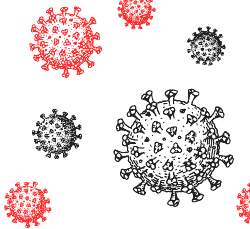When will the dust settle? What will the “new normal” look like? Although we might have a peek at individual changes, it is not possible to completely comprehend the effect of all the recent changes. That fine‑tuned crystal ball is still not available for general distribution.
Here’s what we know so far about the changes we have seen in the last 13 months:
- The number of available workers continues to decrease. During the pandemic we have lost many caregivers of young children. Women, who make up half the population, are still the main caregivers in families. We cannot afford to lose half the go-getters permanently from the work force, so we need to find better ways to support caregivers. To paraphrase a recent sentiment, Melinda Gates shared, “Take care of caregivers and they will take care of the rest of us.”
- Extra planning has been required to connect with customers who might split between home and office.
- Supply chain and logistics conversations are not going away soon. We need to keep in front of our customers to help them prepare for opportunities and changes.
- All kinds of costs will continue to rise including travel and insurance.
- Some lodging facilities may keep more flexible cancellation policies and increase offers for self-driven check-in experiences.
By the time this article is printed, we will know more and will have seen more change.
So how are we to sort out and manage the changes that might be permanent while being at the ready for more? I have an affinity for repeatable procedures to tame all things wild, so let’s start there.
While researching for this piece, I came across something called “Prosci’s ADKAR model.” The acronym was referenced in a March 23, 2020 article entitled 5 tips for managing rapid change, by Deron J. Kling. This model can be applied to create a viable path to change. Part of Kling’s message acknowledges that during rapid changes ADKAR takes too long to deal with the pace required.
Many of the changes we are experiencing during this pandemic were not planned. Our organizations’ ability to deal with continuous change requires a different response. What alternate model might be used to deal with unplanned changes? Perhaps my self-created Pandemic Adaption Version (PAV) using the same letters can be applied.
Here is a side-by-side layout of the two acronyms:
| ADKAR Model | Pandemic Version |
| • Awareness for the need to change. | • Acceptance for the pace of change to accelerate. |
| • Desire to support the change. | • Dig-In to support those around you. |
| • Knowledge of how to implement the change. | • Know you cannot do it alone. |
| • Ability to demonstrate the change’s effect. | • Agility to demonstrate a flexible stance. |
| • Reinforcement to make the change stick. | • Reminder to turn your wheel to where you want to go. |
| ADKAR models how to make changes. | My Pandemic Version might be a more viable coping method while constant change continues. |
We are all waiting for the ship to dock. While we wait to disembark from this crazy trip, remember a few things. It can be empowering to try new things once we have accepted that more change is coming. Supporting your team — vs. knocking them down — is not only the right thing to do, but also the smart thing to do. Motivated packs are always stronger than the lone wolf. Creating multiple support groups can keep new ideas flowing. Being nimble assures your organization can weather more challenges. Finally, know that once your tires get off the ice and meet pavement, you will want to be pointed in the direction you wish to continue.



